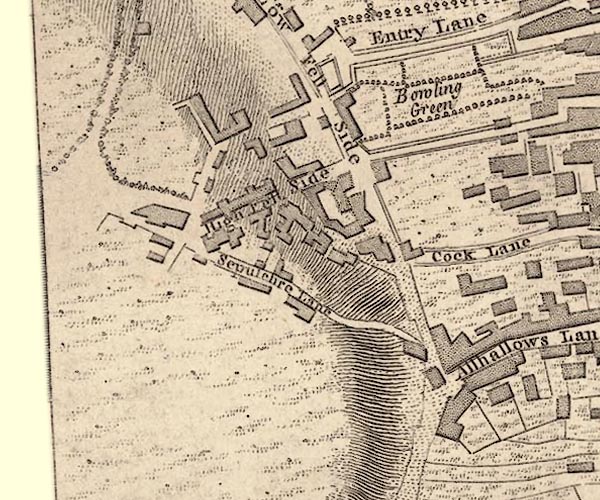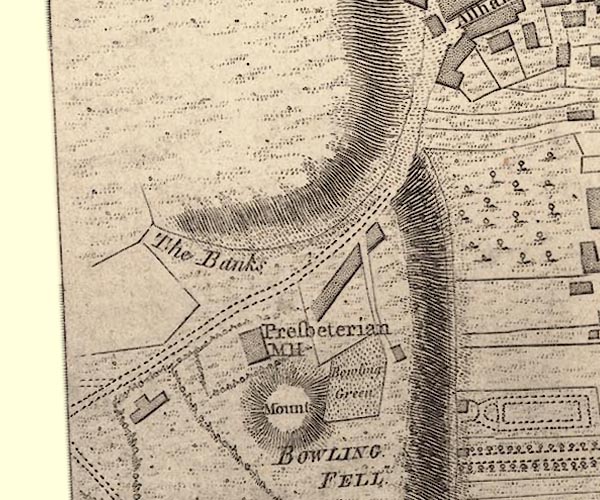




placename:- Kendal Fell

J55192I.jpg

J55192H.jpg
hill hachuring
item:- National Library of Scotland : EME.s.47
Images © National Library of Scotland
 goto source
goto sourcePage 190:- "A TABLE OF THE Height of Mountains and Lakes SEEN IN THIS TOUR, ... TAKEN FROM THE LEVEL OF THE SEA. ... by Mr. John Dalton."
"Kendal-fell, N.W. summit ... 216 [yards]"
item:- geology; fossil; stink stone
 goto source
goto sourceGentleman's Magazine 1794 p.111 "..."
"We set off from Kendal on the first of August, on foot; which mode of travelling a judicious Naturalist will always prefer, because it affords him the best opportunity of pursuing his favourite study."
"Kendal Fell is a hill which does not rise more than 160 yards above the river Kent in the highest part, The superior strata, to a great depth, consist of compact limestone, being that variety called stink stone as it emits a disagreeable smell when rubbed against a hard body, Its colour is grey, its fracture rough, and its specific gravity [2.723]. It abounds with petrifactions,"
 goto source
goto sourceGentleman's Magazine 1794 p.112 "principally of the bivalve kind, which are very frequently mutilated. This vast mass of calcareous matter terminates in an extensive field of the same, occupying the valley to the South, In this part it rests on an elevated ridge of the grey variety of the shistus fuscus, which is the common stone of the country to the North, and even takes place immediately on the East side of the river, where no limestone appears parallel to the hill; but the natural rock is never seen in the low grounds excepting by those who sink deep wells; for, it is buried beneath a thick covering of sand and pebbles, that forms the bed of the Kent, and extends up the declivities on both sides of it to a height far exceeding the limits of the present channel. ..."
item:- geology
 goto source
goto sourcePage 161:- "A superincumbent bed of limestone, by some called the mountain, by others the upper transition limestone, mantles round these mountains, in a position unconformable to the strata of the slaty and other rocks upon which it reposes. It bassets out near ... Lowther and Shap; it appears again near Kendal,"
"..."
placename:- Kendal Fell
item:- altitude, Kendal Fell
 goto source
goto sourcePage 178:- "ELEVATION OF THE MOUNTAINS,"
"ACCORDING TO DIFFERENT AUTHORITIES."
| No. | Names of Mountains. | Dalton. | Otley. | Trig. S. | Jamieson |
| 32 | Kendal Fell | 648 |
